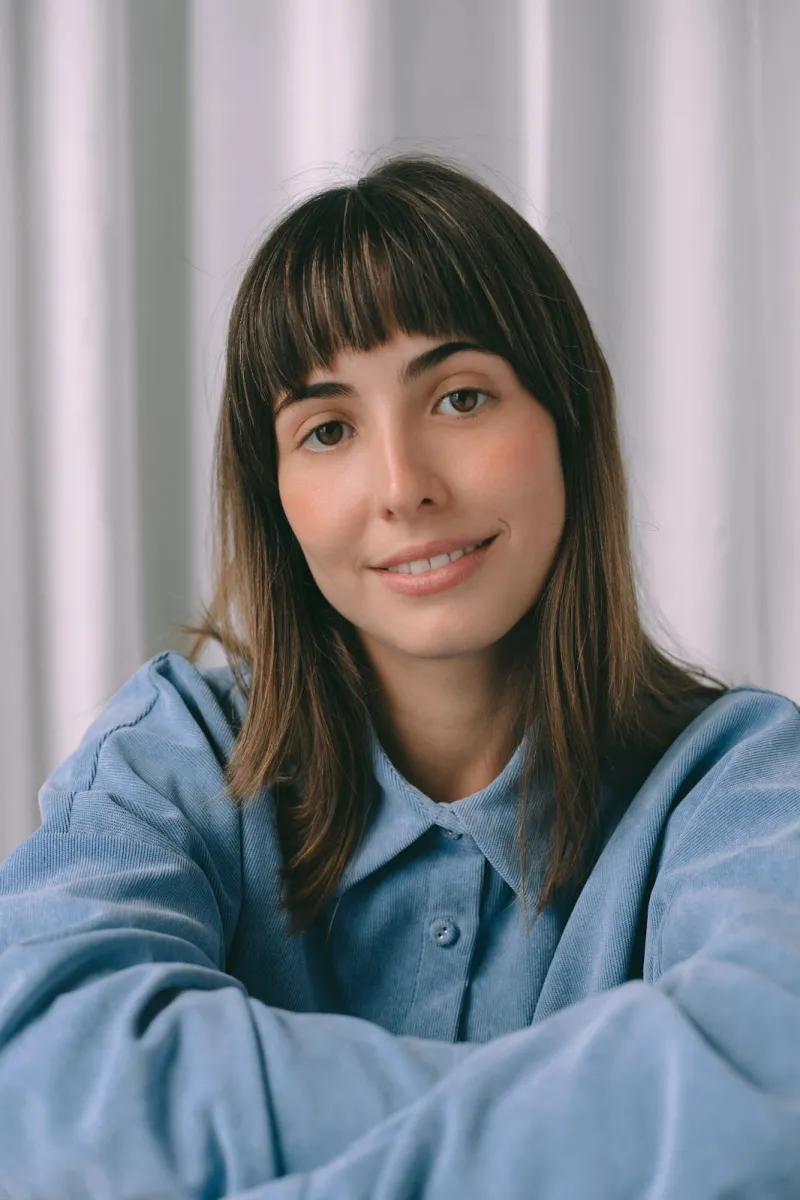

María Luisa Santos is a Costa Rican director, editor and writer. She’s interested in stories about place, memory, and personal loss. Her latest short documentary, Direcciones, won Best Short Documentary at SFFILM 23’. She produced and edited the feature film Stay Here Awhile, which PBS acquired as part of the ReelSouth 2023 Series. Her work has been shown in The New Yorker, SXSW, PBS, Slamdance, New Orleans FF, SFFILM, and others. Read and see more of María Luisa’s work at www.marialuisasantos.com
IDA: Please tell us a little about yourself and your profession or passion.
María Luisa Santos: I grew up in Costa Rica but had the opportunity to study film in the United States. I always wanted to do something creative; my passion since I was little was writing stories. I found my way into editing film partially because it feels like writing with images, albeit with a preset word bank. I have found that dedicating myself to editing has given me the space to also direct my personal work. I am really interested in so many different things, which is why editing feels like a gift. I get to immerse myself in other worlds, and it is always a beautiful learning experience. In my personal life, I love going for hikes with my partner and German Shepard Turbo.
IDA: When did you first start working in the documentary field?
MLS: I studied film at UT Austin, and this is where I first started making documentaries. I worked as an assistant editor for a couple of years while I was a student and slowly transitioned to editor over the years.
IDA: You wear many hats, which is incredible! How do you navigate and move between each project as a producer, director, and editor?
MLS: I think this is fairly common in independent filmmaking, but especially in documentaries. We end up having to wear many hats to see a project through. I do really identify with the crafts of editing and directing. Producing has happened more as a by-product of my deep involvement with certain projects. For example, I’ve edited grant samples for many of my collaborators, and this involvement early on in the process gives me a different type of relationship to the film. Because these projects really move me, and I want them to succeed, I jump on as a producer. My editing background also gives me a different perspective, and I am able to request things I think will be helpful in the editing room later on.
I love working with other editors in the films I direct, but sometimes, I just don’t have the budget. It’s hard to edit your own work, or at least it is for me, because I get too hyper-critical and sometimes fail to find solutions because of this.
IDA: Tell us a little about your latest work, Direcciones.
MLS: “Direcciones” was a really special experience for me. It began as a series of letters between myself and my partner, Carlo Nasisse, who is also a director and cinematographer. It was during the pandemic, and we were writing a lot about nostalgia for the places we are from. When Carlo and I first met many years ago, I told him about the system of addresses in Costa Rica, and it has been a topic of discussion since then. Just to give context to people unfamiliar with Costa Rica- there is no centralized address system, and very few streets have street signs or numbers. We tend to give addresses using a series of references. For example, “San Antonio de Escazu, cien metros al Norte del super Aguimar, es un portón de madera a la izquierda.” We worked on the film for about a year and a half, beginning first by adapting our letters into the voice-over of a semi-fictional woman who loosely mirrors my own self but is fictional enough to give us liberties to explore all of our ideas. It was actually a very pleasant and beautiful production experience because we were writing, shooting, and editing simultaneously. There was no clear line between production and post-production. Every piece tended to generate something new, and rather than trying to condense it quickly, we allowed it to expand and expand. In some ways, it felt like the film would never end, but one day, we just felt it was done! We have had a really lovely experience screening the film and were pleasantly surprised by how interested people are in it. It will be available online with a streaming platform in October.
IDA: Do you have any advice for a young practitioner who is just starting in the field?
MLS: Find talented and kind collaborators. One of the most beautiful things about filmmaking is getting to work with other artists that you respect and look up to. There’s so much room for learning in the process that it makes filmmaking such a fulfilling experience.